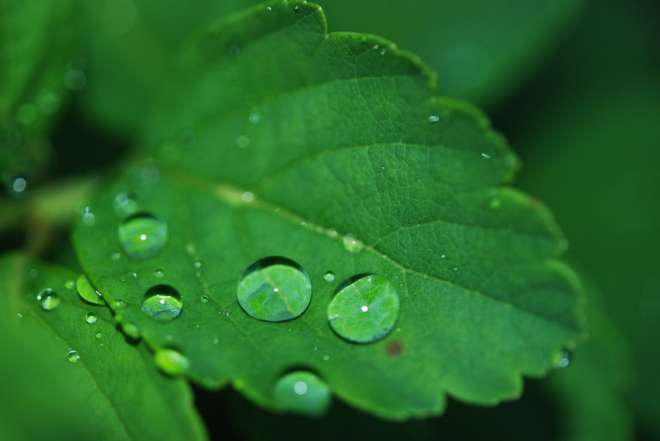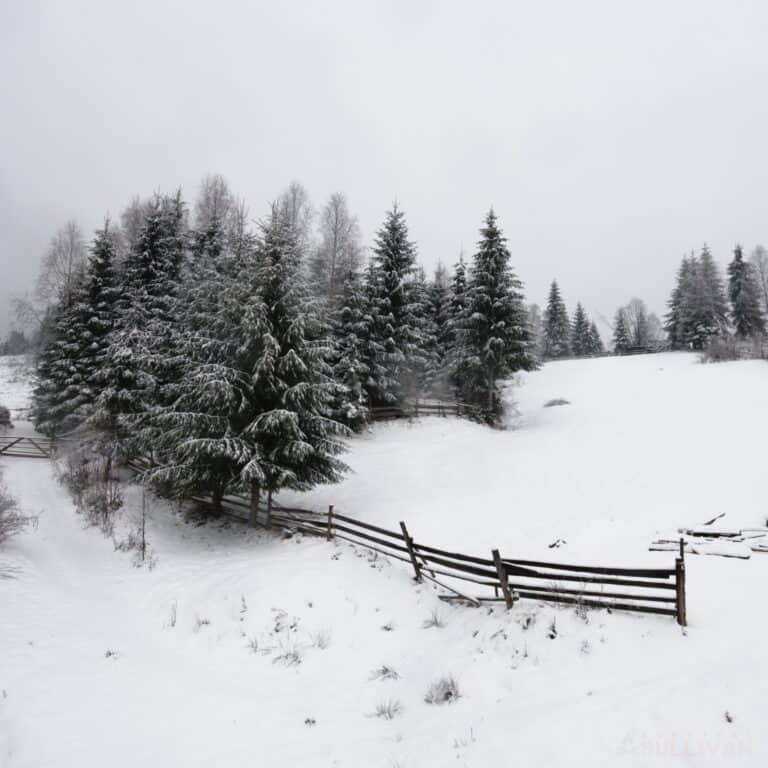Clean drinking water is high on the survival checklist, second only to shelter. The fragility of the human body means that it can only survive a day or two, maybe less, without clean water to drink. Water is necessary to regulate the body’s temperature and allow maximum physical performance.
Without doubt, in the case of a natural disaster or being stranded out in the wild there will be little if any water. That’s why it’s important for you to think outside the box and make yourself familiar with different methods of finding water.
Most importantly, do not rest until you have found some sort of drinking water – ‘procrastination is the thief of time’ and time is the thief of your body’s precious resources.
Nature, in many varied ways, provides us with the essentials needed for our survival. Common sense, keen observation, creativity, and a clear and open mind are the tools you will need to rely on when faced with such danger.
Table of Contents
Surface Water
The most obvious step, if you find yourself stranded without drinking water, is to try and locate a surface water source nearby.
Freshwater lakes, rivers, or streams are the most likely places to find it are going to be located in valleys or low-lying ground.
First, physically scan the area. Most topography maps will show water sources, or at least low-lying ground, however, in the absence of a map, position yourself at a high vantage point – maybe high ground or a treetop – and visually scan the area for signs of water or damp ground.
Take note of areas of lush vegetation or lines of trees in otherwise grassy terrain. This indicates the presence of water, either running or underground. The presence of animals is another reliable clue – they will have some sort of water source which they frequent.
Converging animal tracks in a V-shape, following the point of the V can lead you to water, swarming insects and birds flying low and straight most likely point to a nearby water source.
If you follow a game trail to the water’s edge, be sure to move at least several hundred yards upstream to avoid contamination from animal feces. Bees are an excellent indicator – their hives are always located within a 3 – 5-mile radius of a water source.
Pay attention to the trees in the area. If you find a column of ants going up a tree and into a hole, there may be water trapped inside the tree.
According to Les Stroud, the sky over a water source can appear to be more blue than other parts of the sky. In the early morning hours, look for fog or low hanging clouds as these can indicate a water source.
Another way to collect water in a survival situation is to find damp or wet dirt and gather it up into a t-shirt or bandana. You can then twist and squeeze the water from the mud or dirt into a container. It will be muddy water of course, but you can filter and purify it before drinking.
Water collected from surface sources may well be contaminated and must, if possible, be put through some sort of purification process.
Straining water through a cloth will remove sediment and improve the taste, while boiling it is a sure way to kill harmful microorganisms. However, neither of these processes will remove salt or chemical contamination.
Some ways to remove chemicals in water are:
- purification tablets (which should be included in your survival kit)
- The addition of a small amount of tincture of iodine or bleach.
If there are absolutely no other options, water can be purified using UV rays. Collect the water in clear plastic bottles (remove all labels) and leave out in the sun for one full day, or two days if it is cloudy. This is a method will allow you to purify a lot of water at one time.
Underground Water
Muddy or damp ground may be a good indication that water is readily available. By digging a hole with a depth and width of one foot you may be able to obtain a reasonable amount of groundwater.
This method may be successfully applied, though the hole may need to be deeper, in dry riverbeds, beside swamps or marshes, or in low-lying ground between sand dunes.
According to Mother Earth News, you can also locate groundwater on your property or in the wilderness through a process called dowsing. This process uses a flexible forked stick, typically peach, dogwood, cherry, hickory, etc. to locate water under the ground.
Dowsing can work but it does take some practice and patience. Make sure you learn this technique for finding water and practice it before you have to rely on it to survive.
Drink only after you have passed the water through some sort of filtration process. In the scenario of a coastal situation the water may taste salty – simply move further inland and repeat the process. Simple wells like these may require some shoring to stop the sides caving in and prevent extra sediment contamination.
Rainwater
In most areas, rainwater is safe to collect and consume. It may be found in rock crevices or alternatively you can collect it yourself if there is a chance of a rainfall. Use any clean container or tin to collect it.
If you have a plastic sheet or poncho tie it by the four corners above the ground, allowing some sag. The water will then pool in the center and be easier to collect. A rock placed on the sheet either in the center or to one end will provide a point to where the water will run.

Dew
Heavy dew can easily be gathered by tying a cloth (such as a bandana) to your ankles and walking through wet grass before the sun rises.
Wring the saturated cloth directly into a container, but don’t forget to use your personal water filter (just in case).
Distilled Water
If you are stranded near the coast or on an island at sea, the ocean itself can provide an ongoing source of drinking water after it has been condensed to produce pure water and remove the salt.
If you have fire, heat a few rocks and submerge them in a metal container filled with sea water.
Repeat this procedure until the water is boiling, or at least hot enough to produce a vapor. Cover the container with a towel or some type of cloth. When the fabric is damp, it can be wrung into a container or directly into the mouth.
Ice and Snow
Ice, from either fresh or saltwater can be melted and drank after following the filtration or vapor methods mentioned above. Resist the temptation to eat ice while it is frozen – it will lower the body temperature and will speed dehydration.

Use fire to melt the snow before drinking it. Keep in mind you will need to melt quite a bit of snow to get enough to drink.
If you don’t have access to fire, Les Stroud suggests that you put the snow into a container and carry it inside your jacket or tuck it into your sleeping bag at night to help it melt.
If you must eat snow while it is frozen, it’s better to do so in the early morning hours rather than late afternoon or evening.
Water from Plants
Nature also provides us with some plants which can ease thirst. Fruits contain juices which may be consumed; indeed, any plant or root with a moist or pulpy center can be crushed to release liquid. Green bamboo contains a lot of water.
By removing the top, bending and holding the bamboo stalk down, you will gather a lot of water as it drips from the stalk. It should be clear and without odor. Dry bamboo stalks may also contain water – it is worth checking.
Unripe coconuts contain liquid, which is fantastic for quenching the thirst, while ripe coconut milk must be consumed in moderation as it contains a laxative.
Air plants hold large amounts of water and many varieties of vines and palms may also prove beneficial.
You must be familiar with cactus varieties before using them as a source of liquid – many types of cactus are high in oxalic acid which may have very unpleasant side effects.
Remember, when gathering water directly from vegetation, it may be contaminated with feces or parasites. Boiling it or filtering using your Sawyer Mini will remove them.
The natural process of evaporation from leaves or soil can be converted to use as a water source and here is one simple method:
- Dig a hole in the ground in a sunny place, position a container or water bottle in the center of the hole and then cover the entire device with a plastic sheet.
- Place a rock on top of the sheet, directly over the opening of the container. As the sun warms the soil and water evaporates, it will condense on the plastic sheet, run to the lowest point (the rock) and drip into the collection container.
The addition of green leaves around the container at the bottom of the hole may speed up the process; however, the water will taste of whatever vegetation you have added.
Another option is to place a rock into a plastic bag and tie it securely around a bush or branch of leaves. As the water from the leaves evaporates it will collect in the bag and run to the lowest point (where the rock is sitting).
The Kind of Water to Avoid
Do not, regardless of circumstances, consume any of the following: saltwater, alcohol, blood, undistilled urine, or juices from fish. Do not drink any liquid that it tastes bitter, is sticky, or cloudy.
It is also useful to be familiar with the symptoms of waterborne diseases. The two most prevalent illness contracted from water are Giardiasis and Cryptosporidiosis.
Giardiasis is caused by a parasite that lives in the intestines and is contracted through drinking water which is contaminated with human or animal feces. Symptoms include:
- stomach cramps
- diarrhea
- nausea.
Cryptosporidiosis is also caused by contamination via feces and symptoms are very similar to those mentioned above, but more severe.
Seek medical attention as soon as possible if you are experiencing these symptoms.
There are many and varied ways to collect water from nature and some of them are much easier than you may think. It’s a good idea to experiment with some of these methods before you go camping or to be prepared for disasters. Isn’t it better safe than sorry? Have you tried any of these methods before?

updated by Megan Stewart 09/24/2019

Born and raised in NE Ohio, with early memories that include grandpa teaching her to bait a hook and watching her mom, aunts, and grandmothers garden, sew, and can food, Megan is a true farm girl at heart.
For Megan, the 2003 blackout, the events of 911, and the increasing frequency of natural disasters like Hurricane Katrina, spurred a desire to be more prepared. Soon to be living off-grid, this mother of four and grandmother of ten is learning everything she can about preparedness, survival, and homesteading.

Good to know I knew all of them except the one about the two containers of urine will you bury one and leave the other uncovered the clean side cover